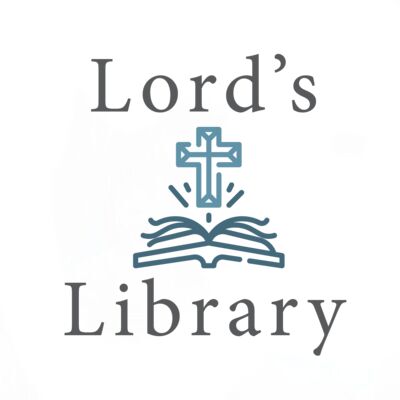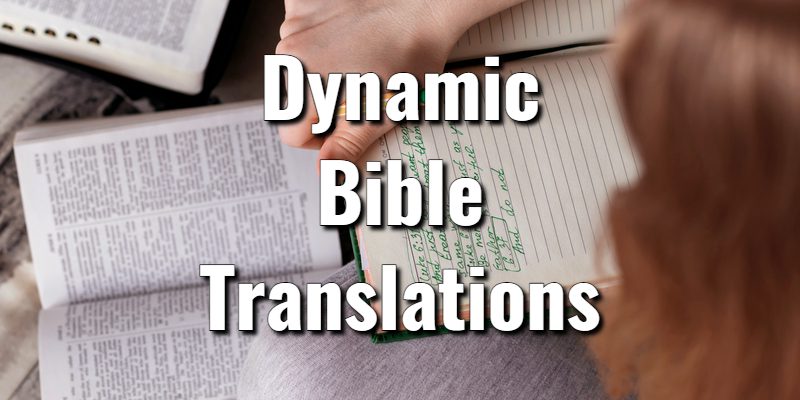Lord’s Library editors created this essential list of dynamic Bible translations and versions to know.
Dynamic Bibles take the ideology of the meaning-to-meaning method to a new level. These Bibles give the reader ultimate accessibility, being easy to understand for almost anyone. In that way, they can be an important tool as they have the ability to reach so many. However, one must be cautious with these translations. This is because translators are given the maximum level of poetic license in their work.
Dynamic Bibles can be helpful to reference when trying to understand complex and intricate passages of Scripture. They are also a good choice for engaging seekers and new believers due to their readability. Dynamic Bibles are a tool for Bible reading comprehension, but caution and an understanding of how they were translated is essential. The most popular dynamic Bible translations are the New Living Translation (NLT), Good News Bible (GNT), The Living Bible (TLB), and The Message.
Dynamic Bibles offer translators the freedom to “elaborate” on Scripture that can enable the reader to better understand. Just a few words of additional context can help to amplify one’s own understanding. Dynamic Bibles often contain more words as well, allowing shades of meaning found in the vocabulary of the ancient languages to shine through.
An interesting comparison showing this in action is to look at John 1:1 in both the KJV and the Phillips paraphrase:
- KJV: “In the beginning was the Word, and the Word was with God, and the Word was God.”
- Phillips: “At the beginning God expressed himself. That personal expression, that word, was with God, and was God, and he existed with God from the beginning.”
The pros of dynamic Bibles are:
- Ease of readability for those new to the faith
- Translator freedom can provide additional context
The cons of a dynamic Bible are:
- Translator freedom can mean inaccuracies
- Scholars usually avoid paraphrasing
Note: The dynamic Bible translations listed below are in no particular order.
Dynamic Bible Translations
The New Living Translation (NLT)
The New Living Translation Bible was created by Tyndale House Publishers in an effort to create a real Bible translation, not a personal paraphrase, that honored the legacy of the Living Bible. First published complete in 1996, The New Living Bible was translated by leading scholars with the use of the earliest and best manuscript evidence available at the time. In light of this, it has proven to be one of the most reliable and popular meaning-for-meaning translations on the market. Still, not being a literal translation means that this Bible is better suited for devotional use rather than serious Bible study.
Good News Bible (GNT)
The Good News Bible is also known as the Good News Translation (GNT). The reason for this name is that the American Bible Society wished to correct the misinterpretation that the Good News Bible was a dynamic translation. This Bible is published by HaperCollins and is widely used by many different protestant denominations.
First published complete in 1976, the Good News Bible aims to be a Bible suitable for children and those learning English. The name of the translation reflects the desire of the translators that the Good News Bible would make the Good News of Jesus accessible to all.
The Living Bible (TLB)
The Living Bible is a dynamic translation created by Kenneth N. Taylor. It was first published in 1971 and used the ASV of 1901 as its base text. Taylor expressed that the roots of the translation actually stemmed from his family devotion time. He realized quickly that his children had a hard time comprehending and applying the Biblical passages and stories that they read together. He knew that his family couldn’t have been the only one with the same challenges. Thus, he began work on The Living Bible.
The Living Bible has proven to be popular among evangelical, protestant Christians since the time of its publication. Even so, it is not looked at very highly in scholarly circles as it is merely a personal paraphrase produced by a single person based on another translation and not the early manuscripts.
The Message (MSG)

While that goal is admirable and much of the translation work quite impressive being done by one person, the reader must realize the limitations in such a Bible. With a paraphrase, it’s impossible to completely eliminate the translator’s own personal theology. While Eugene Peterson’s use and knowledge of the Biblical languages is profound and inspiring in many of the passages in The Message, this is still a Bible to be used with caution and alongside a more literal translation.
Lord's Library participates in affiliate programs. We may make a small commission from products purchased through this resource.
- The 6 Best 1 Corinthians Commentaries to Read in 2025 - March 24, 2025
- The 8 Best 1 Corinthians Bible Study Books to Read in 2025 - March 24, 2025
- 2 Timothy 1:9-10 Meaning: Commentary on Important Scriptures - March 22, 2025















